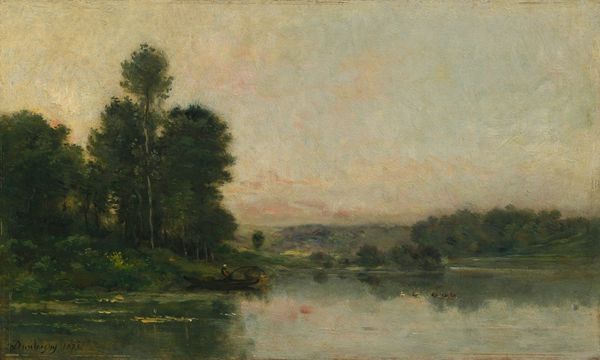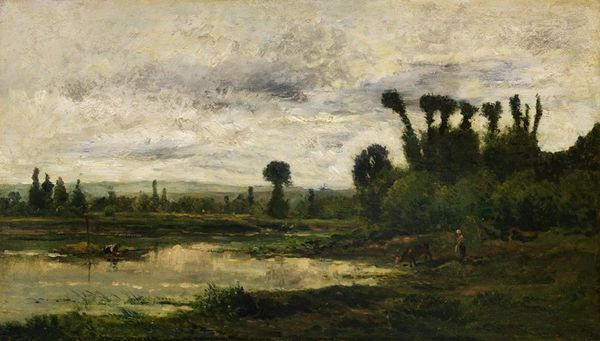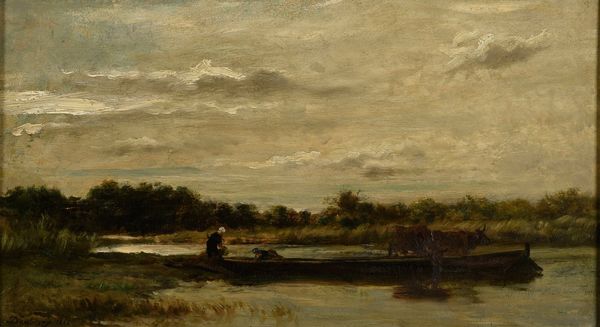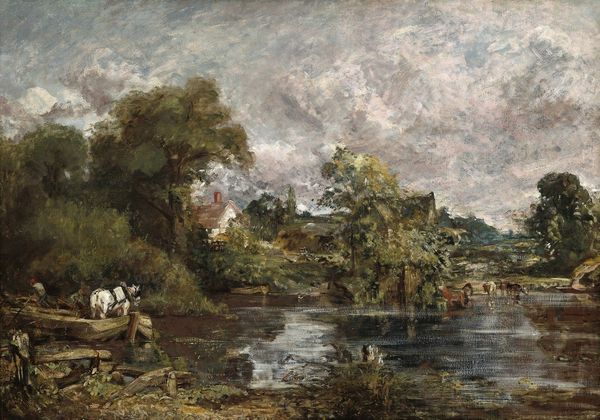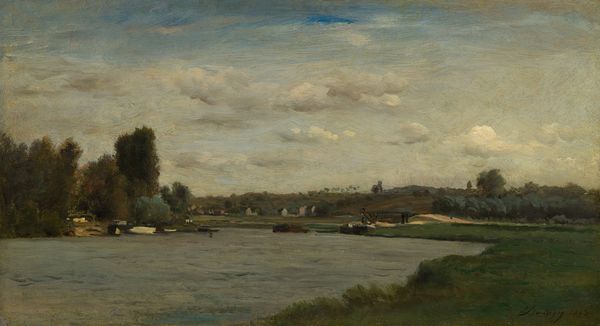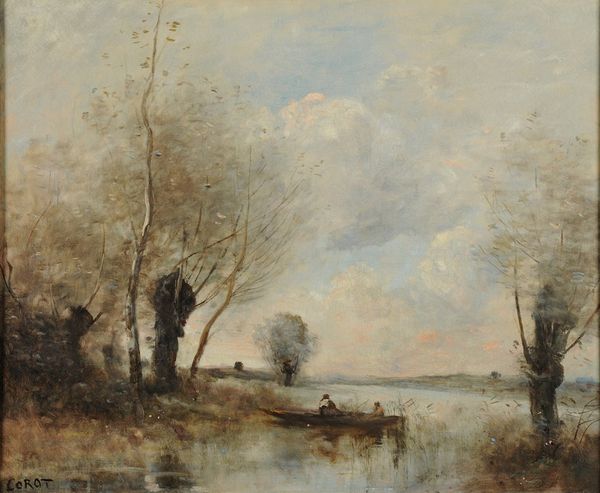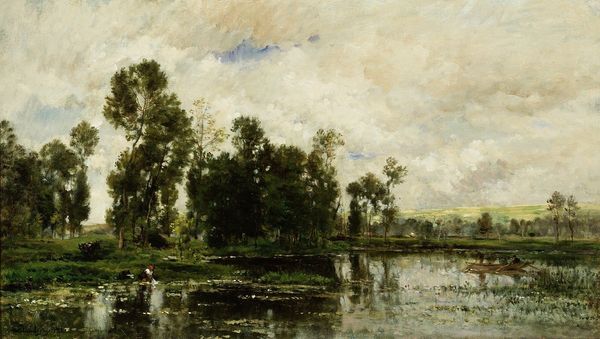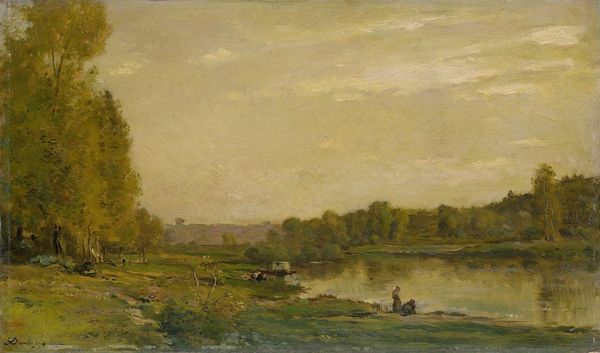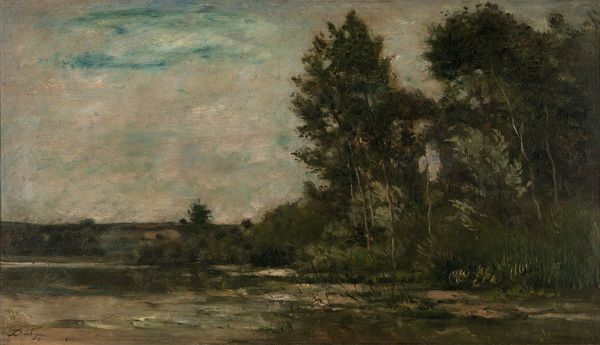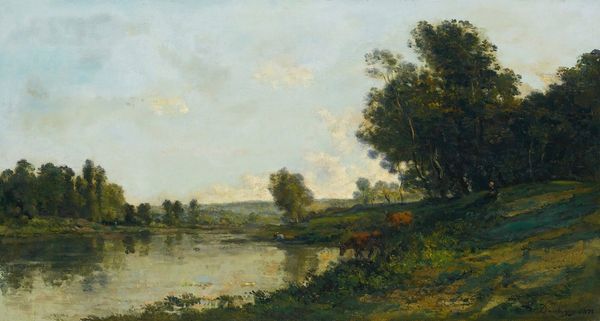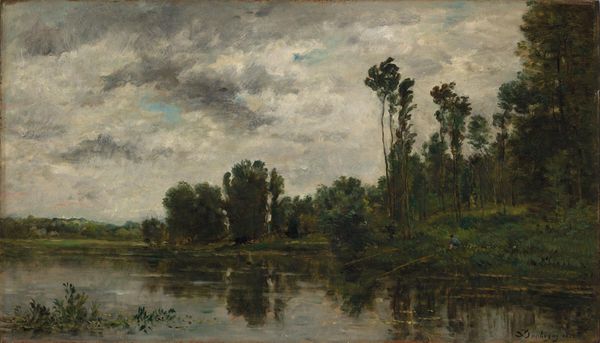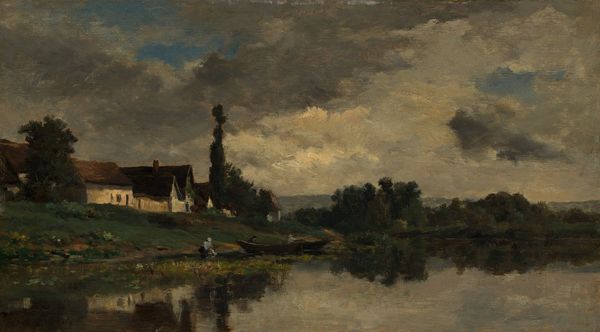
Copyright: Public Domain: Artvee
Editor: We’re looking at "Landscape in Stormy Weather" by Charles-François Daubigny, painted around 1865. It’s an oil painting, and the first thing that strikes me is the somber mood. All that gray! How do you interpret this work? Curator: This painting offers a glimpse into the evolving role of landscape within 19th-century French society. It's interesting to consider how the rise of industrialization influenced a romanticized yearning for rural simplicity. Daubigny captures this tension, doesn't he? The encroaching storm mirrors the social anxieties of the time. How does this piece resonate with our contemporary climate anxieties? Editor: That's interesting. I hadn’t thought about the storm as a symbol of broader social anxieties. I was just focused on the purely aesthetic qualities of the painting. Curator: Exactly. It encourages us to reflect on the connection between lived experience and representation, questioning the social frameworks through which we view art. Did landscape painting have the potential to affect social reform? And, who had access to it? Editor: It’s eye-opening to consider landscape art beyond just pretty scenery, seeing it as a reflection of social anxieties. Thanks for sharing your insights. Curator: It also challenges us to question whose stories are prioritized. Exploring Daubigny's piece through the lens of ecological justice offers a relevant perspective on environmental struggles across diverse communities. I have also gained new insight through your perspective.
Comments
No comments
Be the first to comment and join the conversation on the ultimate creative platform.
